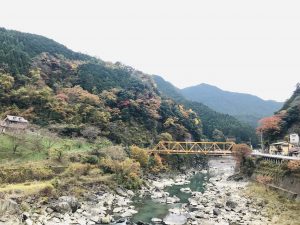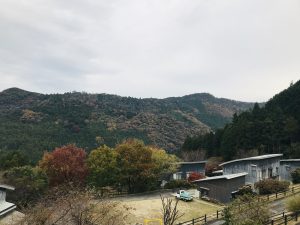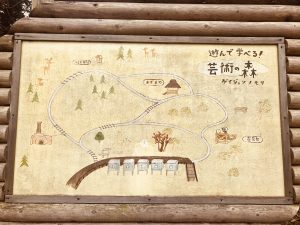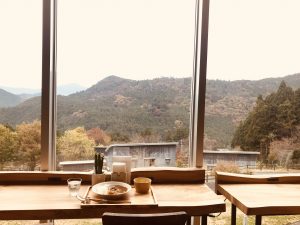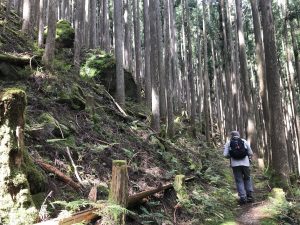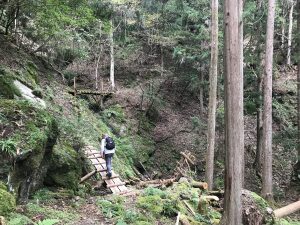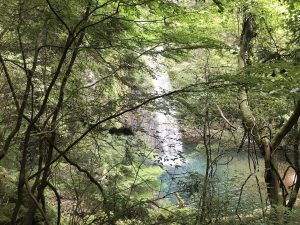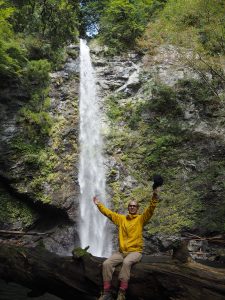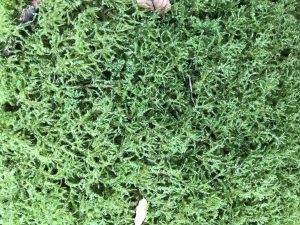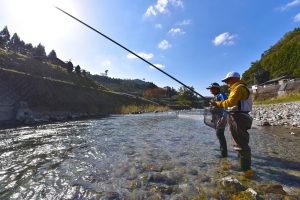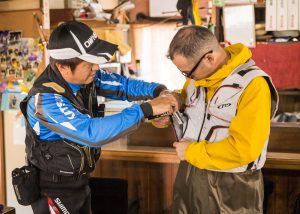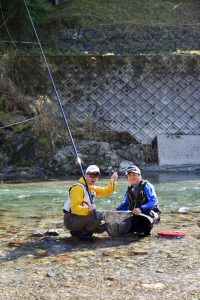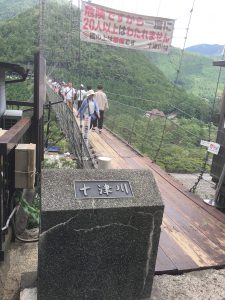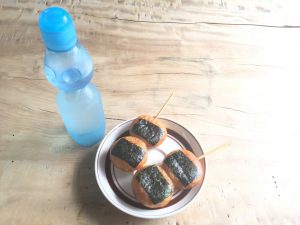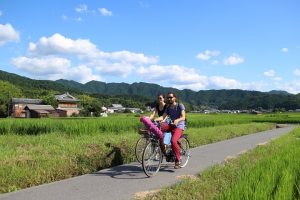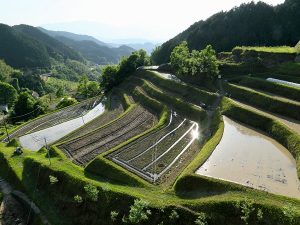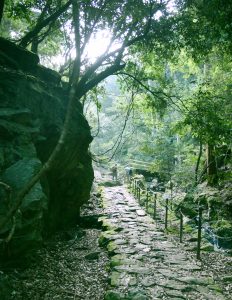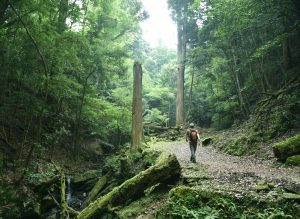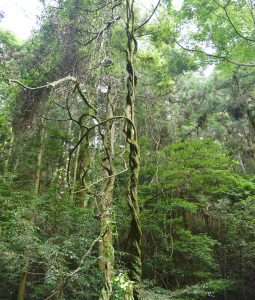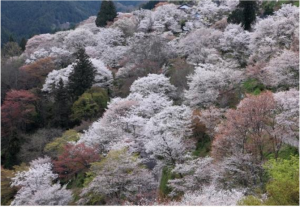 While Yoshino is a beautiful area throughout the entire year, it is perhaps most famous for its cherry blossoms that bloom every spring on Mt. Yoshino. There are so many that it feels like a fantasy world. As we climb up and down paths surrounded by these flowers, a cool breeze might blow a wave of petals off the branches and around our heads. As we climb higher, we might get a great view of the flowers and trees on the mountains around us as well, which always makes me feel like I am walking through the clouds.
While Yoshino is a beautiful area throughout the entire year, it is perhaps most famous for its cherry blossoms that bloom every spring on Mt. Yoshino. There are so many that it feels like a fantasy world. As we climb up and down paths surrounded by these flowers, a cool breeze might blow a wave of petals off the branches and around our heads. As we climb higher, we might get a great view of the flowers and trees on the mountains around us as well, which always makes me feel like I am walking through the clouds.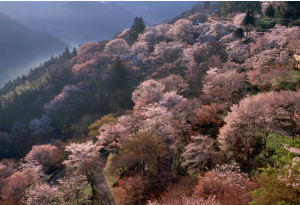
If you visit large parks, riversides, or other places at this time of year, you are likely to see many people picnicking around these beautiful flowers. When I first came to Japan as a student, one of my favorite experiences was gathering at a park with my school club and enjoying the cherry blossoms. There were so many people who had come to the park, that we ended making many new friends. Cherry blossoms have a unique power in that way. They help us relax a little, take a break from our busy every day lives, and enjoy the moment.
With the cherry blossoms in full bloom, this is the perfect time of year to enjoy Mt. Yoshino. In addition to walking through these pink clouds, we have a tour that will let you feel the history of this mountain in its many temples and shrines. Just ride the Kintetsu Yoshino Line to the end of the line, and step into our blooming world of wonder.
No. 330 – An Introduction to Yoshinoyama (Uphill Course)

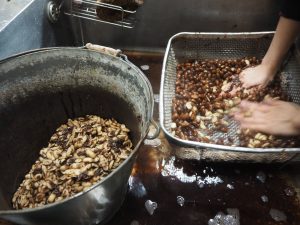 “Yokan” is a Japanese dessert made from mashed beans and gelatin, and often flavored and colored as well. Every winter, Asahikan in Kawakami Village makes its “yuzu yokan” from scratch. They boil the beans in a wood-fire pot, then rinse them and skin them before mashing them up to be used in the dessert. They continue to use a recipe and methods that have been passed down through generations, including picking the yuzu, a citrus fruit, from trees nearby. Flakes of the fruit’s yellow skin add a subtle flavor to the yokan’s sweetness, and a bright element to the already pink-colored dessert.
“Yokan” is a Japanese dessert made from mashed beans and gelatin, and often flavored and colored as well. Every winter, Asahikan in Kawakami Village makes its “yuzu yokan” from scratch. They boil the beans in a wood-fire pot, then rinse them and skin them before mashing them up to be used in the dessert. They continue to use a recipe and methods that have been passed down through generations, including picking the yuzu, a citrus fruit, from trees nearby. Flakes of the fruit’s yellow skin add a subtle flavor to the yokan’s sweetness, and a bright element to the already pink-colored dessert. 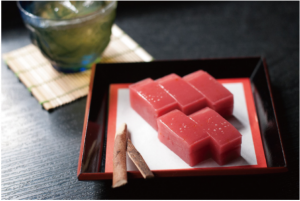 As a 130-year-old traditional Japanese inn, Asahikan offers guests the opportunity to experience what staying in the countryside might have been like in a previous era. With its traditional architecture, including a stunning garden on its second floor, you can walk the same wooden halls and stay in the same tatami rooms as its many visitors have done for over a century.
As a 130-year-old traditional Japanese inn, Asahikan offers guests the opportunity to experience what staying in the countryside might have been like in a previous era. With its traditional architecture, including a stunning garden on its second floor, you can walk the same wooden halls and stay in the same tatami rooms as its many visitors have done for over a century. If you are looking for some outdoor fun as well, we offer an experience in which you can stay at Asahikan, chop some bamboo from its mountain grove, and turn that bamboo into your own lunchbox. You’ll take that lunch with you when you go out to explore the wide variety of moss in our village, and then create your own moss terrarium. Young or old, all ages are welcome!
If you are looking for some outdoor fun as well, we offer an experience in which you can stay at Asahikan, chop some bamboo from its mountain grove, and turn that bamboo into your own lunchbox. You’ll take that lunch with you when you go out to explore the wide variety of moss in our village, and then create your own moss terrarium. Young or old, all ages are welcome!